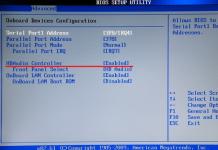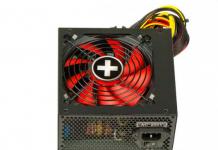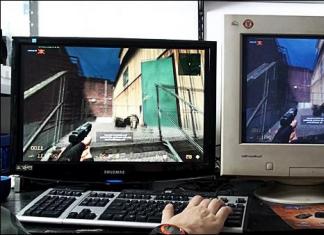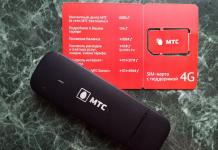A monitor is one of the most important components of a home computer, and its purchase and choice must be treated very responsibly. There are several reasons for this. Firstly, this is the most dangerous part of it, the vision sits down from it. Secondly, a good monitor will not only allow you to do your job more efficiently, but also to truly enjoy the image while watching your favorite movies and photos. Thirdly, it is most correct to allocate a lot of money for the purchase of a monitor, because it does not become outdated as quickly as the same, for example, memory or a processor. This is an investment for at least 5 years, and therefore you need to understand how to choose a monitor so that you do not regret the purchase later.
Today, only liquid crystal (LCD, from English LCD - Liquid crystal display) monitors remain on the market, moreover, most often with LED backlighting. We will talk about them to a greater extent. CRT monitors are a thing of the past and are nowhere to be found. But here LCD models, but with an earlier CCFL backlight, are still found, so the backlight of the monitor will be the beginning of our informative conversation.
1. LED backlight (LED) or fluorescent lamps (CCFL)?
A beautiful LED attachment to monitors says only one thing - the presence of LED backlighting. Few understand the structure of a modern LCD monitor and the structure here is not that each pixel is an LED, they only illuminate multi-colored filters that are opened and closed by "moving crystals". And LCD monitors of the market cannot be called LED monitors, since they are completely different devices. We will not delve into this complex matter, let's say briefly on the topic, there is no difference in picture quality between LED and CCFL. The advantages of LEDs are only in a smaller screen thickness and reduced power consumption, which is why CCFLs have already been almost completely pushed out of the market. And, in fact, this criterion is not even worth taking into account, there are almost no computer monitors with backlighting based on fluorescent lamps in sales.
Choosing LCD, in 99% of cases, it will be an LCD monitor with LED backlight.
2. Select the type of LCD monitor matrix.
Matrix type is the most important criterion for choosing a modern monitor. Therefore, now we are reading very carefully, because the mistake at this stage is the most global one. So, today there are three most popular types of matrices: TN, IPS and VA. All others are analogs of these three directions.
2.1. Matrix type TN.
Having visited any store in our city or on the Internet, we will notice that most monitors have a TN matrix, more precisely, TN + Film. It is the very first popular die and is still the market leader today. TN stands for Twisted Nematic, the prefix "Film" stands for an additional layer of the screen, which helps to increase the viewing angle. And although TN and TN + Film matrices are different types, today only one TN + Film is used in the manufacture of monitors and most often it is designated only by the letters TN, for simplicity. Benefits of TN + Film matrices: low cost and short response time. Disadvantages: small viewing angles, poor color reproduction and low contrast. But for many cases, this matrix is a good choice, even regardless of the price, which will be discussed in more detail later.
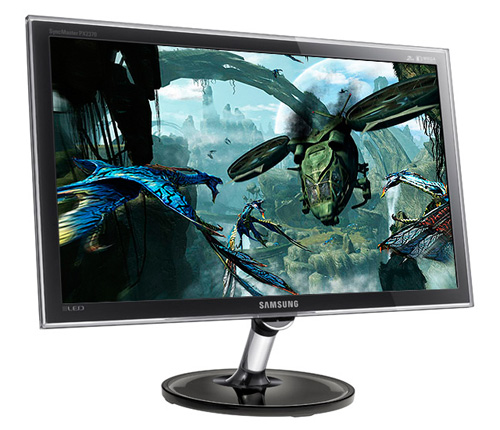
TN + Film is the most popular monitor on the market.
2.2. Matrix type IPS.
The second most popular type of matrix is IPS (In-Plane Switching). The main advantages of IPS-based monitors are extremely high-quality color reproduction and large viewing angles. There is only one drawback: high cost. Regarding response time and contrast, it all depends on the subtype, of which there are a lot today. And the newer the subtype, the better in all respects the monitor will be than any other type.

IPS matrix is the highest quality and most expensive among the market leaders.
The first IPS with a reduced response time were S-IPS, which came out in 1998. Four years later, the AS-IPS type appeared, where the lack of not only a long response time, but also contrast was eliminated. Only these types were not yet of sufficient quality, and it was only with the advent of H-IPS matrices in 2006 that IPS monitors became really high quality. Then there was more, in 2009 the E-IPS matrix was released, and in 2010 - the P-IPS. In addition, there is another type of matrix PLS (Plane-to-Line Switching), which is also a subtype of IPS, but Samsung's own development in 2010. There are also AH-IPS matrices, which are similarly a subtype of IPS, or, more precisely, a modification of LG PLS matrices from Samsung. What to choose ? We try to choose a newer version of IPS or just buy a new monitor of this year with IPS technology, because old matrices are rarely installed in new models. True, there are also budget subtypes, like E-IPS, which is slightly worse in quality, but at a price not much higher than the same TN type.
2.3. Matrix type VA.
The third most popular type of matrix is VA (Vertical Alignment). It was designed to create a “golden mean” between TN and IPS matrices on the market. And so it happened, VA has really become the perfect choice for many. VA matrices are reasonably expensive and high-quality, and the newest subtypes can even compete in quality with monitors based on IPS matrices.
On the market, instead of VA, a more advanced type of MVA is most often found, it is also the most popular. Together with it, no less popular and PVA type, moreover, often in online stores these two types of monitors are combined and write simply MVA / PVA. All because of their similarity, they are almost identical, MVA is simply a Fujitsu development, and PVA is Samsung. Therefore, we will not find MVA matrices on Samsung monitors, as well as on monitors of other brands - PVA. But these are only the first developments, later more advanced matrices S-PVA and S-MVA appeared. Behind them are P-MVA, A-MVA, which are even better than the previous ones. The choice here is the same as with IPS matrices. It should only be noted that the new S-PVA and S-MVA matrices not only reach the IPS counterparts in quality, but also at a price. And if the VA type is chosen precisely because of the “golden mean”, then the choice should be appropriate, you should not choose the “coolest” subtypes in this case. And who is looking for very cheap, he can pay attention to the budget type C-PVA, which is better than TN in the picture and the same in cost.

MVA and PVA are the ideal choice in terms of price and quality.
Hard. And, probably, some readers did not understand how to choose a monitor by the type of matrix. To simplify, let's say that prices are more or less in one category, so it's best to choose among the most popular type of IPS, but for this it is important to add the factor "monitor purpose" to the criterion, and after all the analyzes we will end our reasoning with this. Then everything will become clear to everyone.
Before moving on to other factors in finding a good monitor, let's say a little more about the concept of TFT. Often people are looking for TFT monitors that have disappeared from the market. Where to? To be clear, TFT is an abbreviation for thin-film transistor, which means "thin-film transistor". These transistors are used in the matrix of LCD monitors, and are part of the display, in fact, these are TFT displays - TFT LCDs. And in reality, nothing is missing, TFT is everywhere, even in the newest OLED and AMOLED designs.
3. Display size.
How to choose a monitor for your display size? Most will say the more, the better. We will not agree!
Comparing the prices of monitors for 19 "and 21", everyone will notice a tiny difference, the prices are literally the same. Therefore, buying a monitor even for 26 "is not a special problem and the price continues to fall and becomes even more affordable every year. But do not forget that this is not a TV and you will have to sit very close to the monitor. So a size over 25", on the contrary, will cause discomfort ... The ideal size for a person is 21-23 ", except for monitors for special professional tasks.
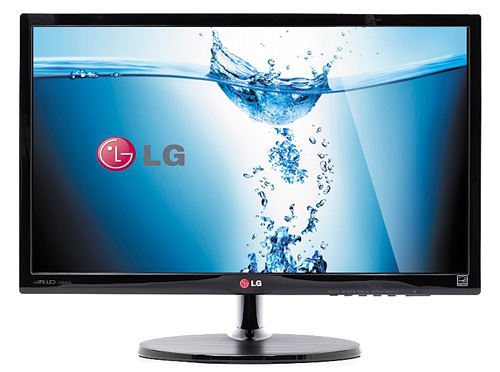
The most correct choice is a 21-23-inch lcd monitor.
4. Screen resolution.
Of course, it is ideal to choose HD 720p resolutions. (1366x768) and even Full HD 1080p (1920x1080). It is possible a little less, which will be cheaper. But the secret of evaluating the resolution is different. It is important to understand that in LCD monitors, unlike CRT, it is not advisable to change the resolution. If the monitor says 1920 x 1080, it is not recommended to set less, the picture will be slightly distorted. At the same time, it is important to understand that the size of the desktop elements and programs depends on the resolution and diagonal of the screen. And if on a 23 "screen with Full HD resolution the pictures will be really easy to read, then on a 19" monitor with Full HD, they will be tiny. This is both an inconvenience of control and an additional burden on the eyes. So, definitely too high a resolution is good for large screens, and definitely bad when the resolution is high and the monitor diagonal is less than 20 ".
5. The aspect ratio.
The most popular aspect ratio is 16: 9, less popular are 16:10, 21: 9, 5: 4, 4: 3. Gone are the days when TVs and monitors were almost square. So you can forget about 5: 4 and 4: 3, they are rare, although they are found, most often of a professional type for designers and architects, where it is important to see everything in all directions. For surfing the Internet, working in text editors, this aspect ratio is also very convenient, but, unfortunately (or fortunately?), Now the computer is most often used as a "TV + DVD", that is, for watching movies. And cinema and at home start to watch, as in cinemas - on widescreen screens. So most monitors are now produced in the 16: 9 wide format, which, by the way, is still very convenient to work with in spreadsheet editors. There are, however, exceptions in the form of 16:10, which are specially created to add at least a little convenience in working with the browser and text editors. And the excesses 21: 9, only for an amateur.
6. Response time of the matrix.
An important parameter that is often overlooked is response time. It depends on it whether the trail will be visible on moving objects. In modern monitors, it is very low, often 2-8 ms. It is within these boundaries that we advise you to choose a monitor. For games and movies, it is important to keep it low, no more than 5 ms, for office work - 8 ms is possible. But again, it all depends on the type of matrix. In TN technology, the response time is low, but choosing IPS matrices with a response of less than 5 ms, we will get a list of only expensive models. With a small budget, you have to sacrifice something, or picture quality, or response time, or money.
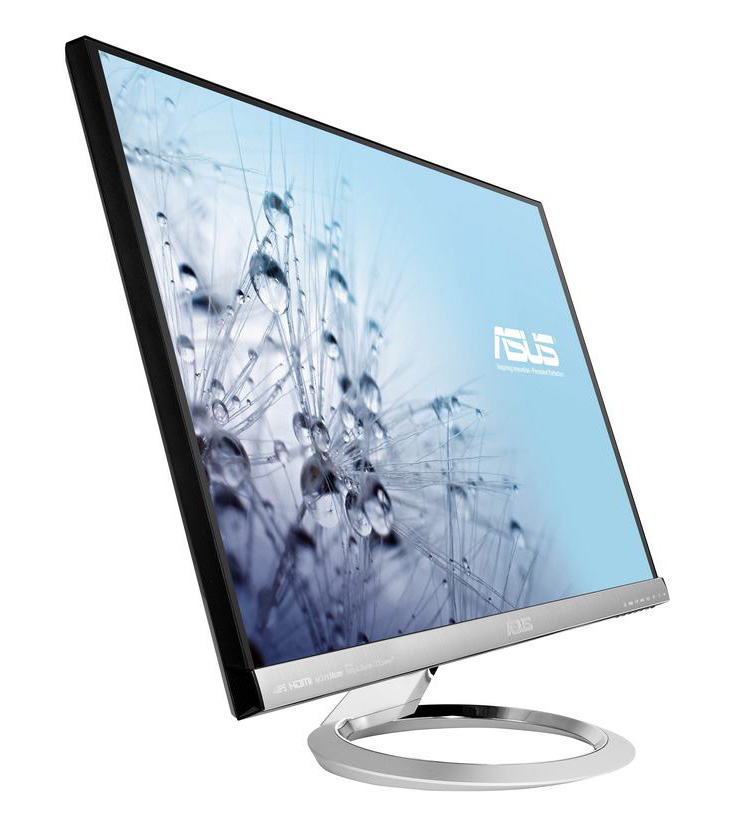
It is best to buy a monitor with a matrix response time of no more than 5 ms.
7. Monitor connectors.
When choosing an LCD monitor model, especially an inexpensive one, it is important to consider the required connectors. Almost all monitors have a standard analog-digital VGA (D-Sub) connector, but in modern trends it loses to digital DVI, which must be present. Outdated VGA may give slight interference during image transmission, in the second DVI - this does not happen. You can also look at the DisplayPort connector, which is even more advanced than DVI, which is important for expensive models. But first you need to make sure that the computer itself supports these high characteristics, otherwise it makes no sense to choose a monitor with DisplayPort, except in the future. Likewise with the HDMI connector, which is needed only in cases where there is a desire to display high-quality FullHD images from other devices that support HDMI to the monitor. Everything else, such as SCART, S-Video, AV, is selected only if the monitor or system unit has an internal TV tuner.
Separately, I would like to say about USB, which often slips on modern LCD models. Its presence is desirable, but everything is individual. And most importantly, you need to figure out what the USB connector carries on the monitor, since there are two options for using it. In the first case, USB can allow you to view photos or play video on a monitor directly from a flash drive, camera or camera without a computer. In the second case, USB can be a kind of card reader, that is, add the convenience of using flash drives on a computer.
8. Purpose of the monitor.
By design, the most popular type is the “office and home” monitor. That is, it is convenient to work on it, sometimes watch a movie and play with toys. In this case, you should not chase after a large diagonal, a chic type of matrix, etc., the very minimum is enough. And the modern minimum is better than the professional model of ten years ago. The second type is a "film" monitor. The size is important here, the wide aspect ratio is obligatory, but about the type of matrix everything will do, the main thing is a low response time. It's the same for a gaming monitor, the response time is the most important, the aspect ratio is standard so that most toys can support it. The resolution in "gaming" monitors with a small and medium budget is better to choose a small one, because games "eat up memory", so when choosing FullHD you need to take care of both a good supply of RAM and the purchase of a new high-speed video card, otherwise it will be very buggy.
"TV-monitor" is a separate topic, it is important to have the correct connectors and a built-in TV tuner. You don't have to bother with the picture quality by choosing TN + Film, because the picture of the TV signal rarely reaches FullHD. And we choose completely opposite characteristics for "professional monitors", here only new IPS matrices, so that colors are perfectly reproduced, so that the diagonal is larger, the price, of course, will be at least twice as high as the classics.
The last popular type of "multimedia monitor" is the speaker monitor. Let's be honest, this is just a nice name for advertising, it is better to buy additional speakers, the sound will be cleaner. Moreover, the internal speakers can now be found in many models, this is not such a super equipment to discuss about it at all.
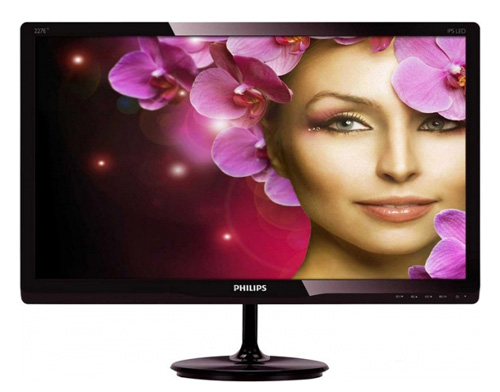
When choosing an LCD monitor for a computer, we never forget what requirements and tasks it should fulfill.
So for a choice, especially an economical one, it is necessary not only to choose the optimal characteristics, but also to be based on the purpose. There is a different monitor for every use.
9. Contrast and brightness.
While discussing the type of matrix, we mentioned contrast and brightness. In fact, the contrast in modern matrices is low only in the TN type, and IPS and MVA / PVA have literally converged already in quality (more precisely, in MVA and PVA a little higher). But if you want numbers, then you need to choose a higher contrast. At the same time, when comparing, we draw attention to the fact that the contrast is static and dynamic, therefore, it is necessary to compare characteristics of the same type. The brightness is even simpler, we take no less than the average parameter of 250 cd / m2.
10. Covering the monitor screen.
The cover of the monitor screen can be glossy or matte. The first type is good with increased brightness, which ultimately gives a greater saturation in the transmission of colors and contrast. But in bright light, such monitors will create glare, which completely ruins the beauty of the image. As an alternative to these flaws, you can buy a monitor with an anti-reflective, matte finish. It is logical to assume that the choice between a glossy and matte finish depends on the workplace, sunlight and indoor lighting.
11. Features.
The features include the 3D mode, the presence of a webcam or speakers, compatibility with MAC, fastening to the wall, etc. Everything is individual and in each model you can find your own, interesting features, so there is no need to say something concretely here. Except to mention the touch screen. Such computer monitors are still rare, but they are already on the market. With the new Windows 8, it is quite a chic choice, but how useful is it? Think, perhaps, if you want to constantly poke your fingers at the monitor, you just need to choose a tablet. They are more convenient than touch monitors and are specially designed for such control.
12. Broken pixels.
It happens that a new monitor has dead pixels. That is, places where a dot constantly shines either white or black. Unfortunately, there is only one way to insure against such a case, if you carefully check all the pixels with your own eyes. To do this, it is enough to load alternately white, black, colored fills and even meshes or checkerboard patterns on the whole screen right in the store immediately before buying. But buying in online stores, we will not insure ourselves against this. After all, a "dead pixel" is allowed in new monitors, for this there is a special standard ISO 13406-2, which implies 4 classes of monitors, each of which can carry one or more such "dead pixels". Moreover, the highest class cannot have such flaws at all, but only the most expensive monitors belong to them.
If we reduce the parallel between the types of matrices and "dead pixels", then the best choice is IPS and MVA / PVA matrices. Here "bad pixels" are less common than in TN matrices, and their color is black, which is less noticeable. In TN monitors "bad pixels" are white and are more common, because the manufacturing technology itself is cheaper.
The bottom line is this: choosing a modern LCD monitor is a difficult process, but evaluating everything carefully, we will definitely find our ideal option. The main thing is to choose the right type of matrix, this is at least 90% of success, and from this you need to start your choice.








